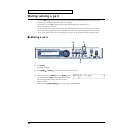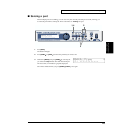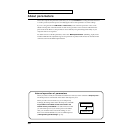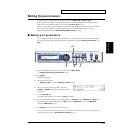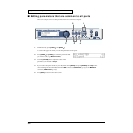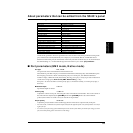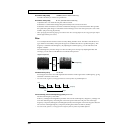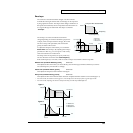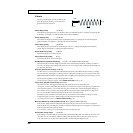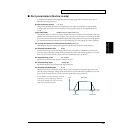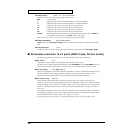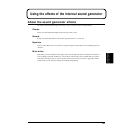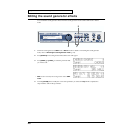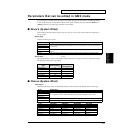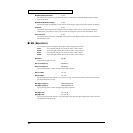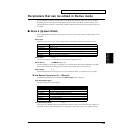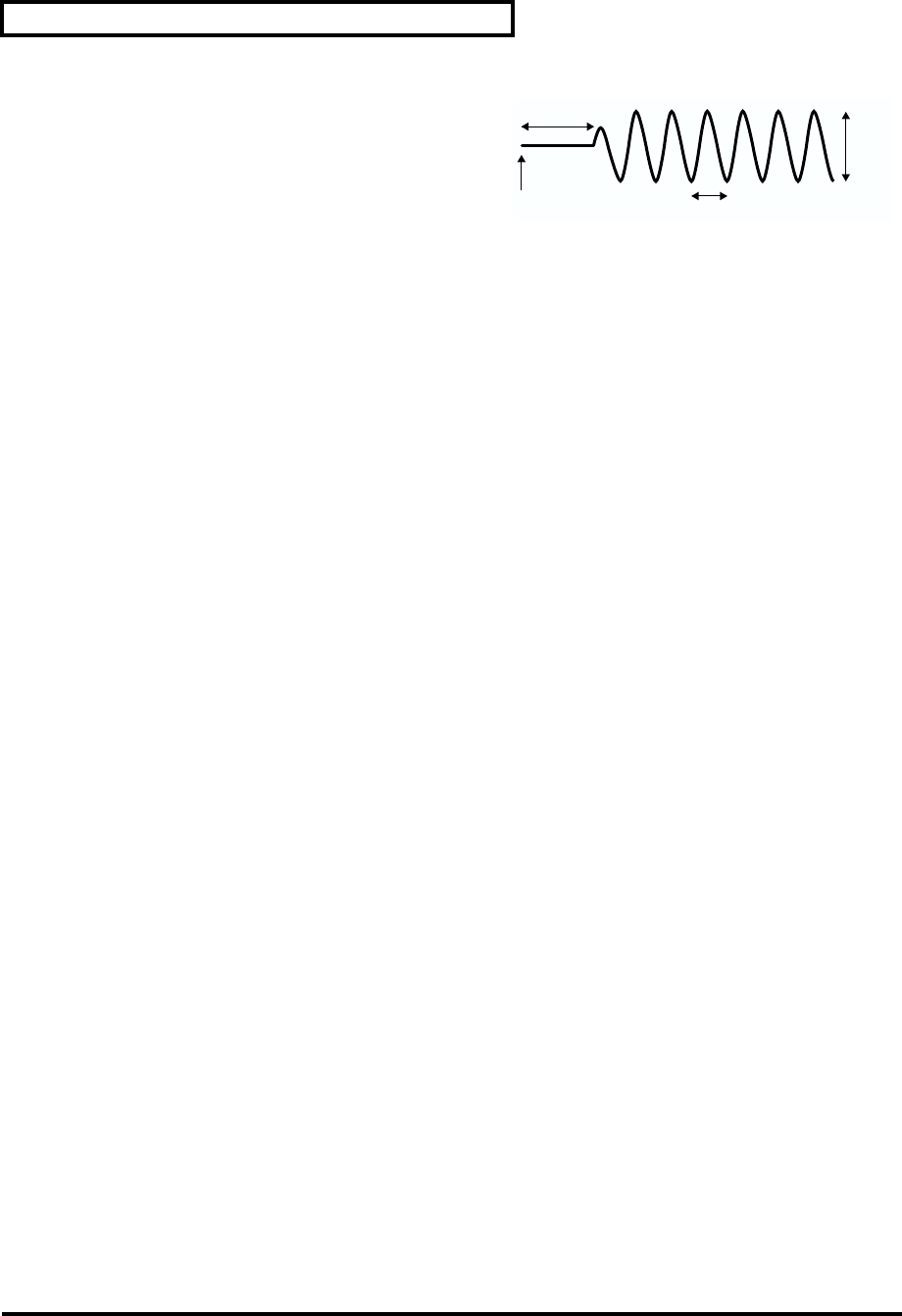
36
Using the internal sound generator
Vibrato
fig.p7-1j
Vibrato is an effect that cyclically modulates the
pitch. By applying vibrato, you can make your
performance more expressive.
Vibrato Rate [cc#76] -64–0–+63
This adjusts the speed (frequency) at which the pitch is modulated. Positive (+) settings will speed up the
modulation, and negative (-) settings will slow down the modulation.
Vibrato Depth [cc#77] -64–0–+63
This adjusts the depth at which the pitch is modulated. Positive (+) settings will increase the depth of
pitch modulation, and negative (-) settings will decrease the depth.
Vibrato Delay [cc#78] -64–0–+63
This adjusts the time to pass before vibrato begins. Positive (+) settings will lengthen the time before
vibrato begins, and negative (-) settings will shorten the time.
Reverb Send Level [cc#91] 0–40–127
This sets the depth of reverb for the part.
Chorus Send Level [cc#93] 0–127
This sets the depth of chorus for the part.
PitchBendSens (Pitch Bend Sensitivity) 0– +/-2–+/-24, (PATCH: Native mode only))
This specifies the maximum change in pitch that can be controlled by pitch bend. A setting of 12 allows
one octave of change, and a setting of 24 allows two octaves of change. With a setting of 0, pitch bend will
not affect the pitch at all.
Fine Tune (Channel Fine Tuning) -50–0–+50
Use this when you want to make fine adjustments to the pitch of an individual part. Positive (+) settings
will raise the pitch, and negative (-) settings will lower the pitch. By setting two or more parts to the same
MIDI channel and instrument, and using Fine Tune to slightly spread apart the pitch of each part, you can
play these parts together to create rich and spacious sounds.
* To adjust the pitch of all parts together, edit the Master Fine Tune setting (p. 38).
Coarse Tune (Channel Coarse Tuning) -64–0–+63
The Channel Coarse Tuning parameter transposes (shifts the key of) an individual part.
“Transpose” means to change the pitch in steps of a semitone. For example, when playing song data from
your sequencer software, you can make the song play in another key without changing the settings of
your software. Or if you want to sing along with the song data playback but the pitch is too high or too
low, you can edit this parameter to transpose the pitch to a comfortable range.
Each step up (down) will raise (lower) the pitch by one semitone. This means that a setting of 12 will
transpose the pitch one octave. With a setting of 0, the pitch will not be changed.
* To transpose all parts together, use Master Coarse Tuning (p. 38).
Mono/Poly (Mono/Poly mode) [cc#126/127] Poly, Mono, (PATCH: Native mode only)
If this is set to Mono mode, the instrument of that part will play only one note at a time. Using Mono
mode is effective for parts that play naturally monophonic instruments such as trumpet or sax. Select Poly
mode for parts that will be playing chords.
* For a drum part, switching between mono/poly modes will not affect the sound.
Scale/Octave Tuning Adjust -64–0–+63
Scale Tuning is a function that lets you make fine adjustments to the pitch of each note in the octave. You
can make one octave of settings, and these settings will adjust the pitch of all octaves in the same way.
Scale Tune allows you to play scales other than the conventional equal tempered scale.
Delay
Depth
Note On
Rate



